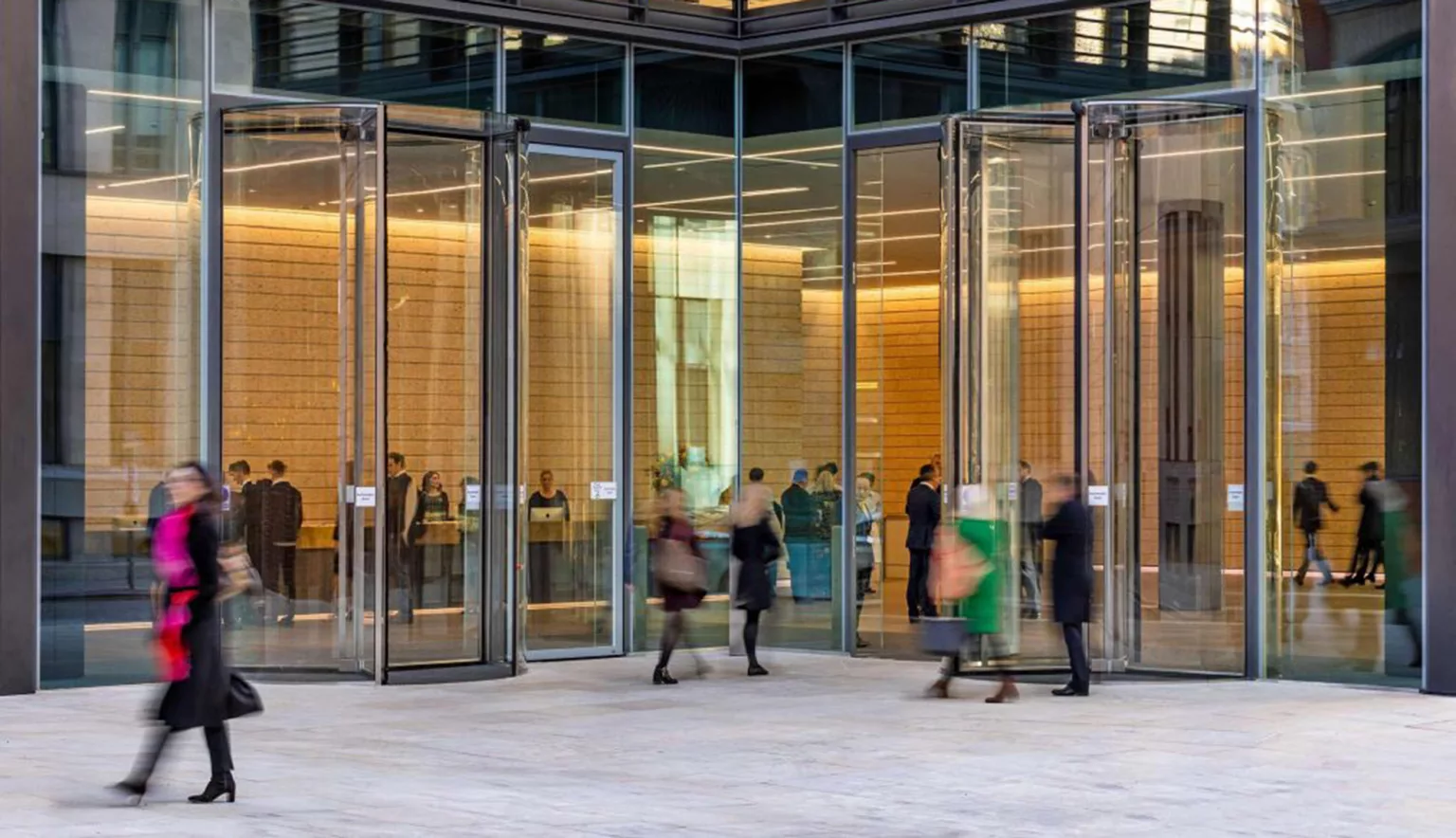Glass Aftercare and its sister company Open Entrances continue to deliver above and beyond for clients, its meticulous attention to detail and capacity to deliver safely and often outside of the box proving to be a winning formula.
TECHNICAL SUPPORT FOR FM & BUILDING MANAGERS
It is difficult to imagine a world without glass.
Invented around 4,000 years ago, the material has become engrained in our everyday lives in a whole host of ways – from gazing out of a train window to enjoying a refreshing drink, it is almost everywhere we go.
This includes buildings. Be it windows, partitions or entrances and many other elements in between, glass is an essential component that is produced in enormous quantities. For instance, last year glass manufacturers around the world made $127 billion worth of product, the majority of which being utilised in building construction.
But what happens to glass after the building is finished?
An equally critical facet of the glass lifecycle is maintenance and, when necessary, repair – and this is where Glass Aftercare comes to the fore.
One of the UK’s leading commercial glazing specialists, the company works closely with facilities management clients to provide proactive (i.e. planned) glazing and façade maintenance, as well as reactive repairs as and when the need arises.
“As Managing Director, I can assure our customers that we take the uncertainty and danger out of managing and maintaining the envelope or fabric of the building with a specialist focus in façade glazing and fenestration,” says Rod Milicevic, himself a veteran of the trade with years of experience and specialist knowledge in installation and integration under his belt.
Glass Aftercare is joined by its sister company Open Entrances, the two firms representing two sides of the same coin.
Open Entrances works with architects and designers to create, engineer and install innovative glass entrances and frameless glass solutions, priding itself on the ability to push boundaries and use innovation techniques and aesthetic solutions to solve any entrance conundrum, especially if oversized and elegance comes under the same breath.
A UNIQUE APPROACH
Indeed, the formidable base of knowledge and unique approach to doing business stands both firms apart in the field, the companies predominantly operating in London and the surrounding home counties. However, for special commissions it has and will continue to travel further afield, a flagship example being the work carried out in Scotland at the Macallan Distillery, just north of the Cairngorms National Park.
Glass Aftercare alone has several hundred years of combined experience between its 25 personnel, a resource which enables it to tackle any problem faced by building management clients. Combine this with the experts housed within Open Entrances who understand how to design and install glass entrances from scratch, and a catch-all group emerges.
“The fact we are two medium-sized businesses also allows us to give each and every client 110 percent of our attention and efforts. We are able to think outside of the box and question the impossible, providing it is safe to do so.
“Our health and safety record speaks to this, and we are willing to take on the unique, exciting and sometimes scary jobs that others may shy away from.”
Crucially, Glass Aftercare and Open Entrances operate as one-stop service providers, able to deliver start to finish packages entirely in-house with all project stages meticulously planned, what the companies refer to as sweating the small stuff – the abbreviation small stands for scope and spec, materials and mechanics, access, logistics and labour.
“We have our own specific methodology to ensure that the clients’ needs are understood and met. We believe in the old adage that the devil is in the detail, and we make sure we sweat the small stuff so our customers don’t have to be.
“For us, it is all about the materials and the mechanics, how glass structures are assembled and mechanically put together so that it’s functional, aesthetically pleasing, fit for purpose and, of course, compliant to all regulations.”
The challenges brought about in 2020 by the COVID-19 pandemic, and subsequent response of both companies, are testament to its approach to doing business.
“We were one of the few businesses that stayed solid through the pandemic. We took all the relevant precautions and more to keep our engineers safely on site and ensure we delivered promised work to clients.
“From office staff getting RAMS done to the specialists on the front lines, we are extremely proud of our teams – it really proved that we never shy away from challenges.”
LOOKING AHEAD
This has resulted in a number of blue-chip clients being on the books.
For example, Glass Aftercare has provided services to the likes of Standard Life, NatWest, Westfield, CBRE, the UK Home Office and Skanska, to name but a few.
This in turn reflects a varied and award-winning portfolio in terms of building types, from Westfield’s shopping centres to the Royal Opera House and other heritage buildings, Glass Aftercare has a provable track record across a hugely diverse spectrum of constructs.
“Whether working with curtainwall systems or fire screens, there aren’t many systems that we haven’t worked with or installed over the years. Facade consultancy is a specialist niche within facilities management, and whilst we work with blue-chip facade consultants, we also bring our own expertise into this field.”
And looking ahead to the future, this formidable bank of knowhow is going to be critical.
The challenges presented by the coronavirus pandemic still rage on, the economic fallout of various lockdown measures yet to be fully felt.
However, Glass Aftercare and Open Entrances remain supremely confident in their capacity to continue delivering projects on time with as little disruption as possible to the client and fabric of the building.
The concluding message is very much one of being open for business, the MD ending the conversation by coming back to a very simple piece of logic behind the naming of Glass Aftercare.
“People often ask why we are called Glass Aftercare, and the answer is simple,” Milicevic says.
“It’s because we care about glass and its impact on the building, its efficiency and aesthetically how it affects possibly the greatest assets within it – the people that work and live there.”
























